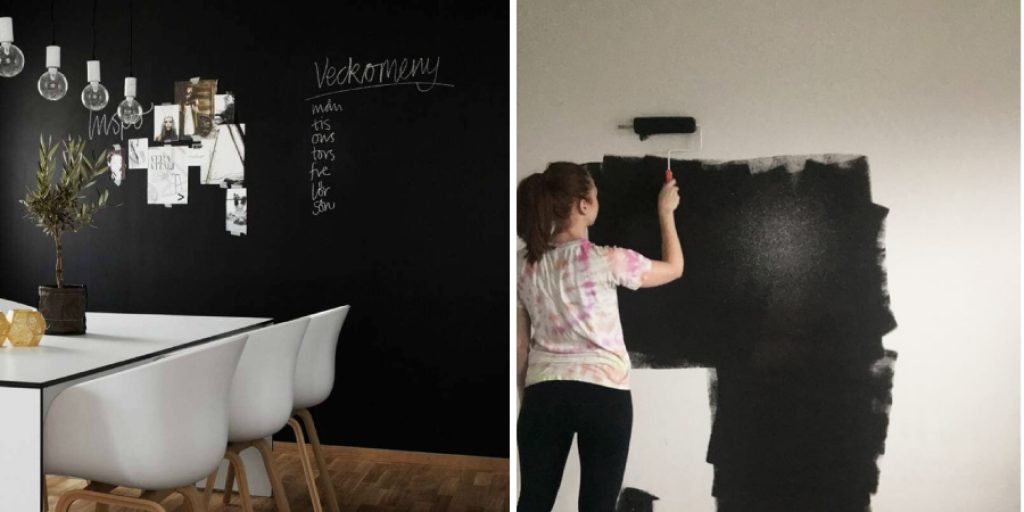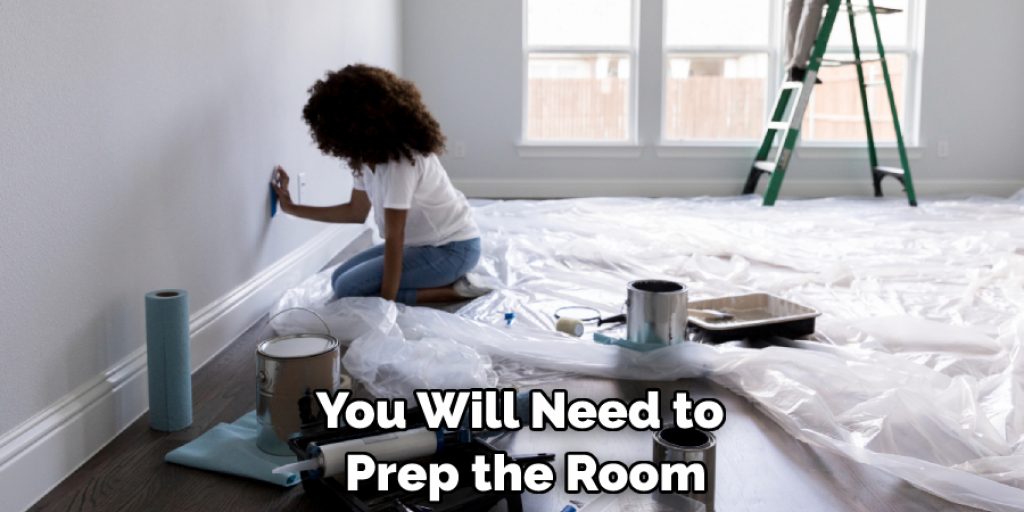How to Paint Over Black Walls
Are you tired of the same old black walls in your house, but don’t want to spend a fortune on renovations? Painting over black walls can be challenging, but with the right techniques and supplies it’s an easy and affordable way to transform any space.
Here we’ll show you how to paint over black walls quickly and easily, no matter what kind of surface they are made from. We’ll cover everything from selecting paint colors to preparing for painting day, so read ahead if you’re looking for a fresh new look in your home!

Whether you’re looking to freshen up your living space or just change the overall mood of a room, painting over black walls can be a great way to make an impact without breaking the budget. However, this seemingly simple task requires more consideration than most traditional paint jobs. Before diving in with your pail and roller, consider these tips for transforming dark walls into light and bright.
Why May You Want to Paint Over Black Walls?
1. To Freshen Up the Look of a Room
Black walls can be beautiful but they can also make a room feel dark and heavy. Adding a pop of color to the walls with paint will brighten up the space and give it a fresh, new look. This will also give you the opportunity to match your wall color to any new furniture, decorations, or accents that might be going in the room.
2. To Change the Color Scheme of a Room
Changing up the color scheme of a room can be difficult when it has black walls because painting over them is often easier than trying to repaint all of the other colors in the room. Once you have painted over your black wall, you can choose any color scheme you like and incorporate it into the room with new decorations or furniture.
3. To Cover Up Imperfections
If your black walls have any imperfections, such as dents, scratches, or smudges, painting over them can be a great way to quickly and easily cover them up. No one will be able to see the imperfections once you’ve painted over them, and your walls will look perfect again.
How to Paint Over Black Walls in 6 Easy Steps
Step 1: Gather All The Materials
The very first step is to gather all the materials necessary for painting over black walls. This includes a paint roller, drop cloths, painter’s tape, primer, and the desired color of wall paint. Make sure that you have enough supplies to cover the entire area you are working with.
Step 2: Prepare The Room

Before starting on any painting project, you will need to prep the room. This includes moving furniture and decorations out of the way, covering floors and other surfaces with drop cloths, and removing any outlet covers or light switch plates.
Step 3: Clean The Wall
It’s important to make sure the surface is clean before applying new paint. Use a damp cloth and some mild soap to wipe down the wall, and then allow it to dry completely.
Step 4: Prime The Wall
Using primer helps ensure that the new paint will adhere correctly and look its best once finished. Apply a thin coat of primer using a roller and work in long strokes for even results. Allow the primer to dry before continuing on with the next step.
Step 5: Cut In The Edges
Using painter’s tape, start by cutting in the edges of the wall with a paintbrush. Make sure to go slowly and be precise with your lines for best results. Also you have to make sure to remove the excess paint from the edges of the tape before it dries.
Step 6: Paint The Wall
Now, you can finally start painting over your black walls. Use a roller for large surfaces and brush for tight corners or details. Apply two coats of the desired color of paint, allowing each coat to dry completely before applying the next one.
And, you’re done! By following these steps, you can easily paint over black walls and give your space an updated look. Enjoy your newly painted walls!
Some Extra Tips To to Paint Over Black Walls
1. Start With Lighter Colors and Gradually Move to Darker Colors
This is very important when painting over black walls, as darker colors tend to look muddy and unappealing. Start with a lighter color such as beige, tan or white and gradually move towards darker shades such as browns and greys. This will ensure that the wall looks even in color and has an attractive finish.
2. Use Quality Primer and Paint
When painting over a black wall, it is essential to use quality primer and paint. Primer helps to ensure that the paint adheres better and lasts longer on the walls. Quality paints are also important in order to get an even finish without any streaks or patches.

3. Use Masking Tape
Masking tape is a great way to ensure that the edges of the wall are clean and crisp. While painting, use masking tape to mark out the lines on the wall and then carefully paint in between them. This will prevent any accidental paint spills or runs from ruining your hard work.
4. Work On A Small Area At A Time
Painting a black wall can be a daunting task, so it is important to break it down into smaller sections. Working on a small area at a time ensures that the paint looks even and no mistakes are made. Also, when you move on to the next section, make sure that the previous one has completely dried up before continuing.
5. Apply Two Coats Of Paint
Applying two coats of paint is essential for a good finish when painting over a black wall. The first coat should be thin and used to cover the majority of the surface area, while the second coat should be thicker in order to even out any streaks or patches. Make sure that each layer has completely dried up before applying the next.

These tips will help to ensure that your painting project is a success and you can enjoy the fresh look of your newly painted walls. So get started today with these simple steps and achieve beautiful results in no time! Good luck!
Frequently Asked Questions
What Precautions Should I Take When Painting Over a Black Wall?
Before starting any painting project, make sure to prepare the walls appropriately. Clean the black wall with a mild soap and water solution to remove any dirt or debris, then let it dry completely before applying primer and paint.
Wear protective gear, such as gloves, goggles, and a face mask when painting, and make sure the area is properly ventilated to reduce any exposure to fumes. Additionally, test a small patch of the wall first with your chosen primer and paint to make sure it adheres correctly and looks as desired.
Should I Use Primer When Painting Over Black Walls?
Yes, you should use primer when painting over black walls. Primer helps to seal the wall, creating a smooth surface that’s easier to paint on and will provide better adhesion for your new coat of paint. In addition, using a primer also helps prevent any underlying colors from showing through.
What Type of Paint Is Best Suited For Painting Over Black Walls?
For painting over black walls, use matte or satin finish paint. Both of these finishes will help to hide any imperfections on the wall and provide better coverage than other finishes like eggshell or gloss. Additionally, they’re easy to clean and are more resistant to wear and tear over time. Be sure to apply two coats of paint for best results.
How Much Paint Do I Need To Paint Over a Black Wall?
The amount of paint you’ll need to successfully cover a black wall will vary depending on the size of the area you’re painting, and your chosen type of paint. Generally speaking, one gallon of paint is enough to cover around 350-400 square feet. However, it’s always best to purchase a bit more than you think you’ll need, as it’s better to have extra paint in case of touch-ups.

Conclusion
Now you know how to paint over black walls! There’s no doubt that painting over a black wall can be intimidating. But with the right preparation, you can achieve a room transformation with just a few coats of paint and a bit of elbow grease. Before you start painting, double-check the condition and cleanliness of your walls. Multiple layers of primer may be necessary to successfully cover your walls.
You may also want to consider adding an insulating or sound dampening layer for optimal results since black absorbs light more easily. Most importantly, remember to select the highest quality paint you can afford and apply even coats using proper painting technique for the best looking finish. With these tips at your fingertips, painting over black walls will be a breeze – a design




